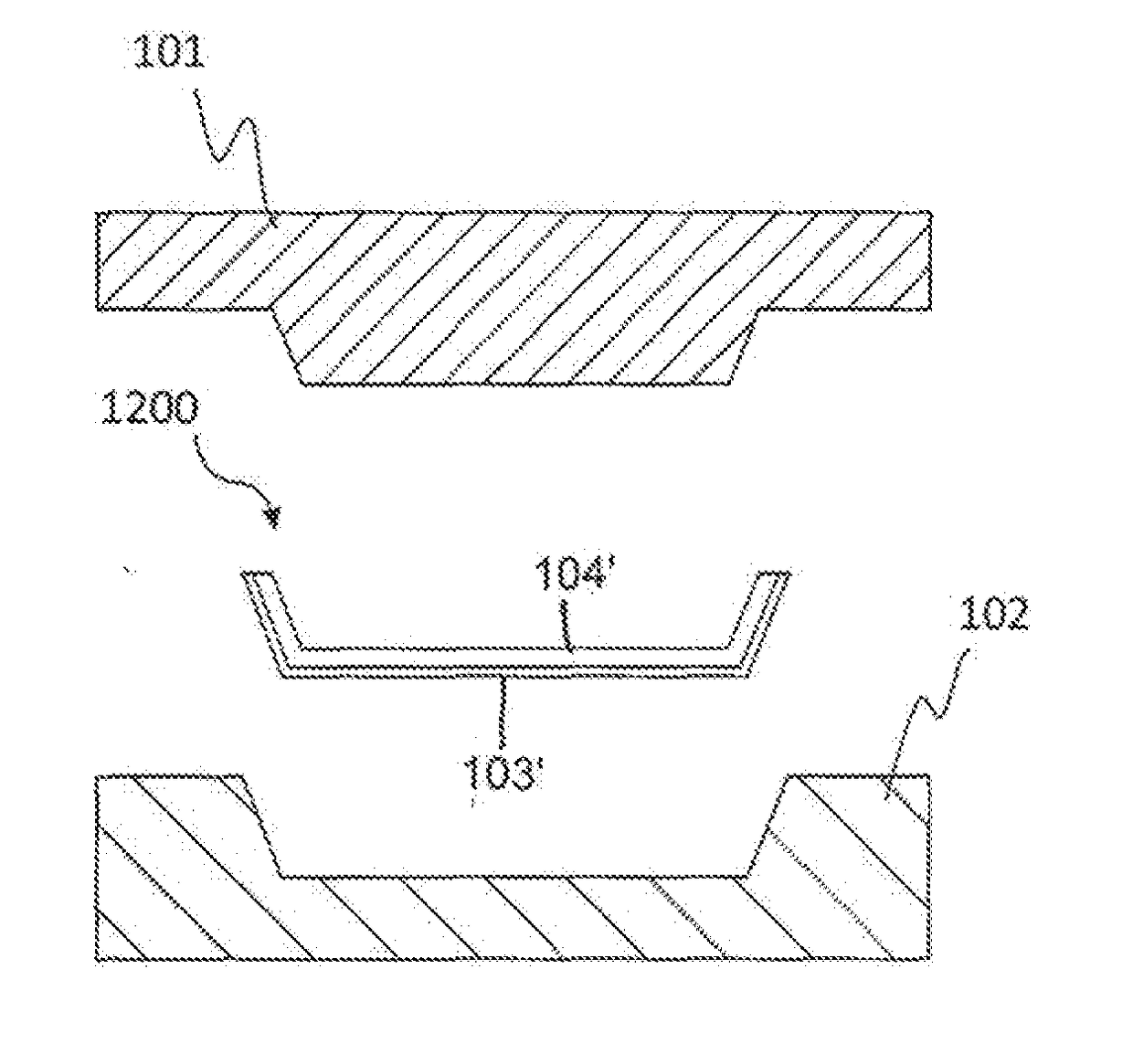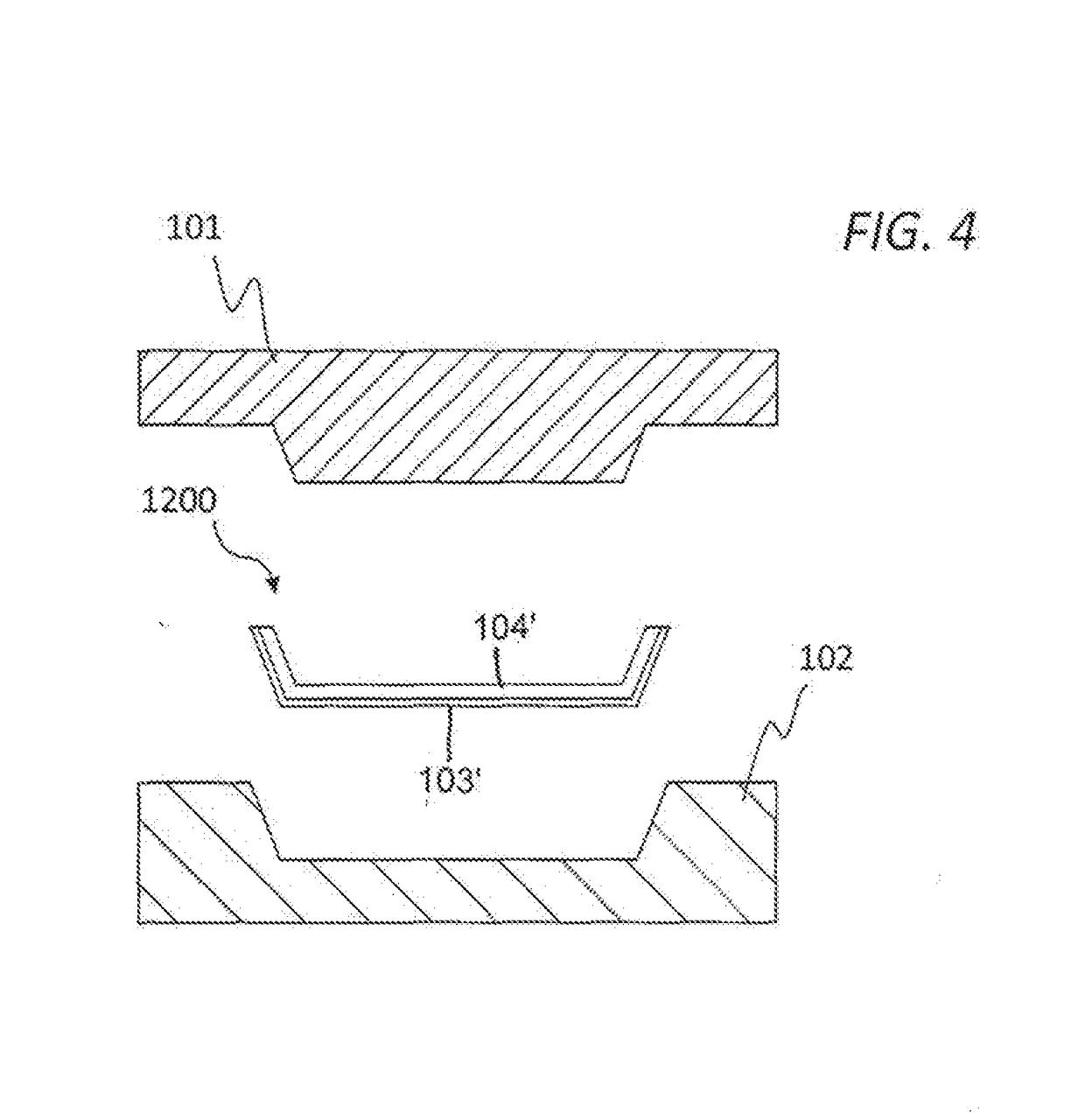Method for manufacturing composite part of polymer and metal
- Summary
- Abstract
- Description
- Claims
- Application Information
AI Technical Summary
Benefits of technology
Problems solved by technology
Method used
Image
Examples
Embodiment Construction
[0032]A method for manufacturing a composite part 1200 (FIG. 4) of polymer and metal, such as a model airplane fuselage half, particularly where the metal is provided only on one side of the polymer piece and the latter is a backing for the metal, utilizes a mold 100 (FIG. 1) having a plurality of mold parts 101 and 102 and more specifically a core mold half 101 and a cavity mold half 102. As depicted in FIG. 2, a layer of metal 103 is formed, preferably by an electroforming or electro-deposition process, on an inward- or cavity-facing surface 105 of the cavity mold half 102. Thereafter the mold parts 101 and 102 are assembled and clamped to one another, as shown in FIG. 3, to form a mold cavity 106 (FIG. 1) defined on one side by the layer of metal 103 and on an opposing side by an inward- or cavity-facing surface 107 of core mold half 101. The method then entails filling the mold cavity 106 with resin material 104 so that the resin material is in contact with the layer of metal 10...
PUM
| Property | Measurement | Unit |
|---|---|---|
| Thickness | aaaaa | aaaaa |
| Thickness | aaaaa | aaaaa |
| Thickness | aaaaa | aaaaa |
Abstract
Description
Claims
Application Information
 Login to View More
Login to View More - R&D
- Intellectual Property
- Life Sciences
- Materials
- Tech Scout
- Unparalleled Data Quality
- Higher Quality Content
- 60% Fewer Hallucinations
Browse by: Latest US Patents, China's latest patents, Technical Efficacy Thesaurus, Application Domain, Technology Topic, Popular Technical Reports.
© 2025 PatSnap. All rights reserved.Legal|Privacy policy|Modern Slavery Act Transparency Statement|Sitemap|About US| Contact US: help@patsnap.com



